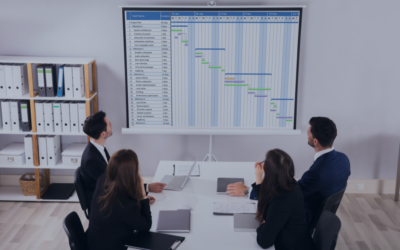Getting ERP quotes can seem as complex as designing software itself. There are so many components that factor into the overall ERP price: How can you ensure that you’ve ticked all the boxes? The following ERP software pricing guide summarizes everything that goes into a software quote so that when you’re shopping around and trying to set your ERP budget, you get the most accurate numbers possible.
Software license fees
One of the most important factors to consider in the anatomy of a software quote is your software licensing fees. Sometimes called annual “maintenance” fees, these fees can total as much as 18 percent of your original purchasing price every year.
Contemplate the software license fee model when assessing a software solution. Will it:
- Scale up affordably with your company if you grow/add on new employees
- Align with your business office’s needs? i.e. capital expenditure vs. operating expense
Have a frank discussion with potential software vendors on this front, as license models can have a significant ongoing expense for your business.
Common ERP Pricing Models: Their Pros and Cons
Subscription-Based (Most common with cloud ERP vendors)
- Pros: Lower initial costs, regular updates, and scalability.
- Cons: Ongoing payments can add up, and customization may be limited.
License-Based (Also known as on perpetual licensing. Most common with on premise systems.)
- Pros: One-time payment, full ownership, and potential long-term savings.
- Cons: Higher upfront costs and additional fees for updates or support.
User-Based Pricing
- Pros: Pay based on the number of users, which can be cost-effective for small businesses.
- Cons: Costs increase with more users, which can be expensive for larger organizations.
Usage-Based Pricing
- Pros: Pay for what you use, which can optimize costs for variable usage.
- Cons: Unpredictable costs if changing business processes cause usage to fluctuate significantly.
Your Core Solution
Especially with ERP, one of the most popular business software solutions out there today, your initial costs can depend on what goes into your core offering. ERP software, as an example, is built out of separate modules. If you want more bells and whistles and a module for every silo at your company from supply chain management to accounting, then you are looking at a more complex and more expensive solution. Smaller shops can do well to start with a minimal ERP project, then expand from there as they grow.
Infrastructure
Will your solution be on-premises and, therefore, require sizeable investments in hardware and personnel? Or will you be going for a cloud-based ERP or hybrid solution that can significantly ameliorate infrastructure costs? Don’t forget to factor in the changes you will need to make to your infrastructure to get a solution up and running.
ERP Implementation Cost
ERP implementation is a significant piece of the cost of ERP as well. Not only do you need to get the solution going, you need to go through a substantial planning phase to make sure you are getting the right solution for your needs.
When implementing an ERP system, you will want to build an ERP project management team that includes your employees who can provide input and guidance on how to build out your solution. This will take time and work, and it will also keep these stakeholders off-task, for a bit, which may affect productivity in the short term.
You also need to factor in the cost of any consultants you work with, as well as any additional hours your own IT team might otherwise bill if they weren’t working on the implementation.
Ongoing Maintenance
Finally, you will need to estimate ongoing expenses for the continued maintenance of your ERP solution. Will you have additional costs for consultants or IT going forward? What about updates or bug fixes? Make sure that you factor in these important costs when building a software quote.
If you would like to get a personalized quote for ERP software solutions, get in touch with our team of professionals for guidance and real time advice. Along with the information in this ERP software pricing guide, let us help you understand how much your new software will cost and what kind of ROI you can see from it in the long term.



